Light modifiers alter or control the light. Some of them soften the light for more flattering shadows, others create hard light for drama.
Others allow photographers to have more creative control over the light by changing the color or even shape.
It’s easy to spend thousands on lighting modifiers if you try to buy them all.
Here’s what you need to know about photography lighting modifiers, whether you are looking for studio light modifiers or flash modifiers.
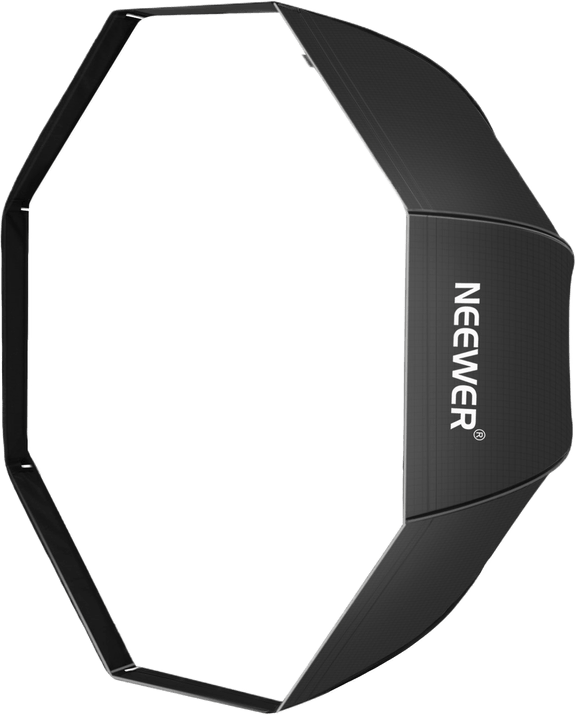
What Are Soft Lighting Modifiers?
Flashes and strobe lights are small. Left unaided, they create hard light.
Several different types of modifiers work to soften that light. They spread it out over a larger surface.
Umbrellas, softboxes, beauty dishes, and scrims all soften the light, with a few subtle differences.
Photography Umbrellas
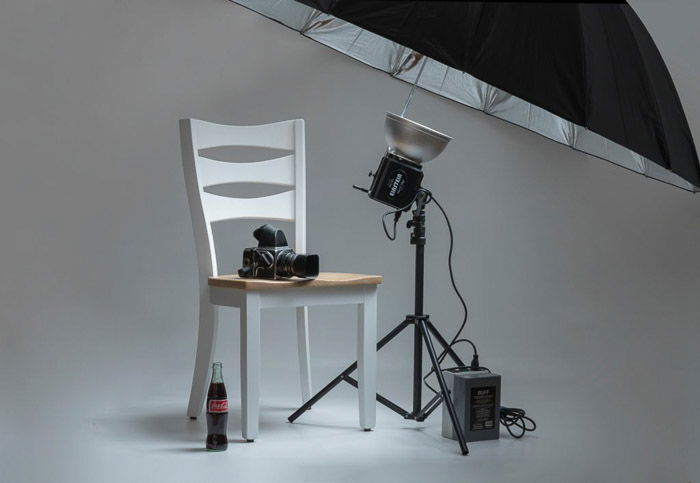
An umbrella is often one of the first modifiers new photographers try — and for good reason. They are easy to use, easy to transport, and affordable.
Photography umbrellas create softer light by increasing the light’s surface area.
There are two main types of photography umbrellas — diffusion umbrellas and reflective umbrellas. A third type combines both using removable covers.
Diffusion umbrellas, also called shoot through umbrellas, soften the light through diffusion. With this type, the light source is pointed at the subject.
The umbrella is in-between the light and the subject. The light is shooting through the umbrella fabric.
Reflective umbrellas are pointed in the opposite direction. The light hits the reflective surface of the umbrella — usually silver or white. Then it bounces back on the subject.
Both types create a softer light. But a reflective umbrella offers a little more control and doesn’t loose as much of the light.
Convertible umbrellas contain both types in one. They use a black cover to turn the umbrella from diffusion to a reflective type.
Like all modifiers, the larger the light source the softer the light. That means a larger umbrella will create softer light.
Just be careful not to go crazy big. Your light stand will easily tip over and you’ll loose a lot of light power to spill.
Softboxes
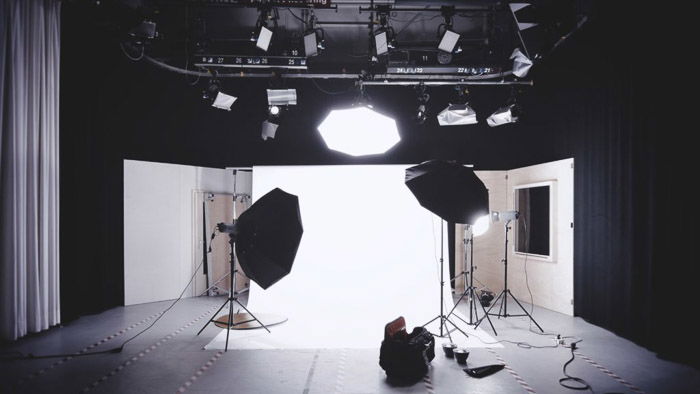
Softboxes offer similar diffusion, with a little more control and the additional option to choose the shape of the light.
Like umbrellas, they also come in a variety of different sizes. The larger the box, the softer the light.
While you can go larger, most photographers consider the ideal softbox to be at least two feet but smaller than four feet. Or around the size of an average window.
Softboxes, as the name suggests, are “boxes” that are placed over the light. The light goes through a diffusion panel of white fabric, which soften and spreads out the light.
Some models have more options. These include panels that you can swap out, for different levels of diffusion.
Umbrellas have one shape. But softboxes have several shape options, including the octobox, squares, and strip softboxes or elongated rectangles.
Different shapes control how the catchlights look in portraits, as well as the shape of the light in the image.
Like umbrellas, softboxes spread the light out pretty far. But they are generally considered to be a bit easier to control than umbrellas.
Softboxes can use techniques like feathering to make sure the light is falling only where you want it.
The downside in the softbox vs. umbrella debate? Softboxes tend to be pricier than umbrellas and can sometimes be more difficult to set up.
The ability to control and soften the light while creating shaped catchlights makes them a favorite modifier for many photographers.
Beauty Dishes
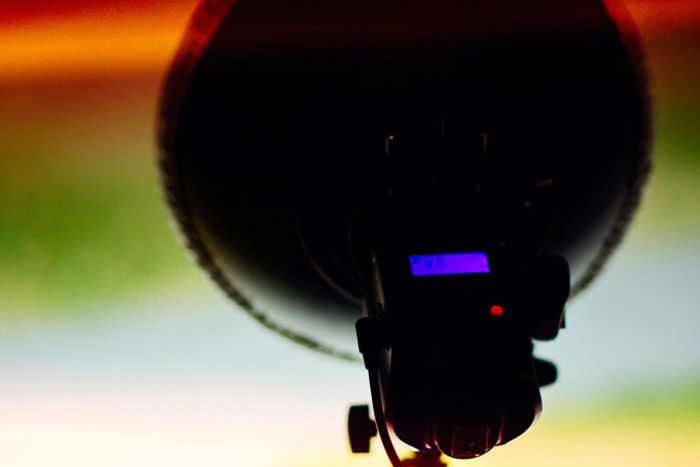
A beauty dish will still soften the lights. But the effect isn’t quite as pronounced as with a softbox or umbrella, creating deeper shadows.
This lighting modifier is also a bit more capable when it comes to controlling just where the light is hitting.
Looking at the shape of a beauty dish, it’s easy to see where the modifier gets the name. It looks like a metal dish with a small plate in the metal.
Photographers can remove that piece to create a harder light source. Beauty dishes tend to be smaller than umbrellas and softboxes. The most popular sizes sit around a foot and a half to two feet.
More advanced beauty dishes will allow for additional options. These include a sock to soften the light and a grid to create more directional light.
The other part of the beauty dish’s name comes from where the modifier is most frequently used — beauty.
The modifier is often a favorite for portraits. Use it if you want light soft enough to flatter the skin, but still want shadows to add drama or sculpt out the cheekbones.
The name can be a misnomer though. There’s nothing wrong with using a beauty dish on a male subject, for example.
While a beauty dish will still soften the light, it’s not quite as soft as other softening modifiers.
That makes the light easier to control. Using a beauty dish can make it easier to prevent the light from falling too much on the background.
Scrims
Beauty dishes, umbrellas, and softboxes are typically used with artificial lighting. Srims are often large enough to be used with both artificial light and natural light.
A scrim is essentially a large piece of diffusion fabric stretched over a frame. Scrims are typically very large and expensive. They are also big enough to create your own shade outside or to diffuse the light from a large window.
Scrims aren’t as popular because the size and cost makes them less accessible to new photographers. But, remember the bigger the light source, the softer the light is. And scrims can get pretty big.
Scrims are simply giant panels of diffusion fabric. This type of modifier can be used with a variety of different lights. You can place a strobe behind it, or use one to create your own shade on a sunny day.
The trick is getting them in position, since they are so large. Some can work on stands. Other photographers use assistants to keep the large diffusers in place.
Scrims can cost a few hundred dollars to buy outright, though there are some DIY options as well. For photographers who need to create large spots of shade anywhere, a scrim can open up a lot of possibilities.
Directional and Hard Light Modifiers
Scrims, umbrellas, softboxes and beauty dishes are designed to spread the light out to create softer light. Another set of lighting modifiers are designed instead not to soften the light, but to control it.
Modifiers like a grid, snoot, barn doors and flags don’t soften the light. They help photographers control exactly where the light falls in an image.
Grid
A grid is a lighting modifier placed over the light source to create a narrower beam of light. The accessory looks just like you’d expect — a grid of material.
That pattern, usually in a honeycomb pattern, reduces the spread of the light, creating a tighter light beam.
Grids are used to control the light falloff. For example, grids can be used in portraits so the light doesn’t wrap all the way around the face.
Grids can also help keep the light off the background.
Grids are usually designed to go with other lighting modifiers. That’s how they attach to the light. You’re limited as to what pairs with your other modifiers. But grids also come in different degrees that determine how far the light spills out.
A ten degree grid creates a narrow light beam, while a 40 degree grid has a much more subtle effect.
If you don’t want the light to brighten the entire image, a grid is a good option. Grids, however, aren’t as customizable as barn doors or as narrow as snoots.
Snoot
A snoot is a tube-looking lighting modifier that creates a spotlight effect. The snoot narrows the light source down into an even smaller light source. It creates hard light with very limited spread.
Photographers often use snoots to light a specific part of the image, highlight a certain detail in the image, or to mimic a spotlight or even flashlight.
Snoots are designed to be compatible with a specific light source. When shopping for a snoot, you’ll need to make sure you buy one that’s compatible with your lighting gear.
Thankfully, snoots aren’t typically expensive, starting around $18. Some, however, list for prices in the three-digits.
Barn Doors
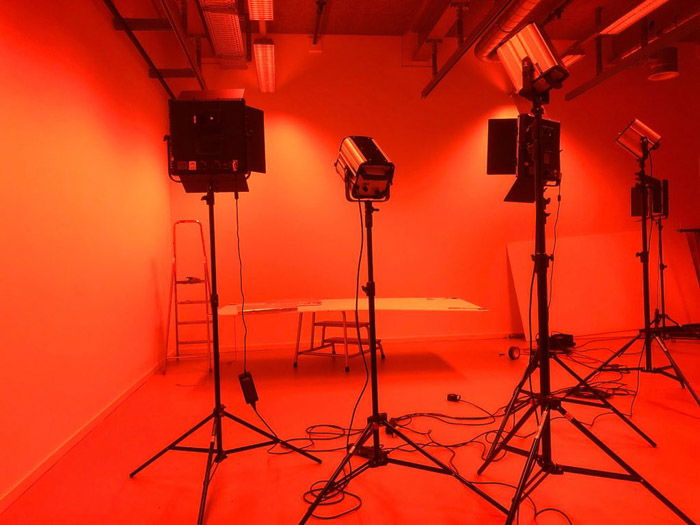
Barn doors are a common lighting modifier. You may have already seen them used in stage lighting. With this type of modifier, four doors surround the light on each side.
By adjusting the position of those doors, you can control the spill of the light. If you tightly close all four doors, you can create a narrow beam of light like a snoot.
Because there are four doors to work with, the light is easy to customize with a barn door. You can create a horizontal or vertical strip of light, close down all sides, or just close down a single side.
Barn doors offer a lot of control for your light. Like snoots, barn doors are designed to fit a specific light.
This means the cost depends on the lights you have. They can start as low as $30.
Flags
Think of a flag as a single, larger barn door. Or perhaps as a scrim with black fabric instead of white. A flag blocks out a specific part of the light.
You can place a flag over part of a square softbox to make a strip box instead, for example.
Flags can be used with other modifiers, or used separately. For example, you can place them on a stand like a scrim to block light for hitting a certain part of the scene, like the background.
Most flags are solid black. A net flag will block out only some of the light and a white flag will diffuse but not block the light. This is similar to a scrim.
Flags tend to range in price based on if you just want some fabric or if you need a frame to hold the flag in place.
Creative Lighting Modifiers
A handful of lighting modifiers don’t control the spread of the light or diffuser the light, but are designed to allow for creative lighting effects.
These modifiers include gels, gobos, and patterns.
Gels
Gels are colored material that’s placed over the light to change the color of the light.
You can use gels to match the color temperature of the ambient light in the scene. You can also use them for creative effects.
You can create red or blue light, for example, by using gels. Another way to use gels is to change the color of the background by directing a gel-modified light on a white backdrop.
Gels tend to be inexpensive. Just keep in mind that you’ll need to buy something to hold them in place if you don’t have something already.
Gobos and Patterns
Ever seen a photo created from light streaming through the blinds? Patterned light can add interest to an image. It’s a good way to get creative with your lighting.
Gobos and patterns allow you to create patterned light with artificial lights.
Gobos are placed inside a holder to shape light using a pattern cut into a disk. You can use them to mimic the look of blinds or light coming through tree branches.
A gobo isn’t the only way to create patterned light. A cucoloris is like a scrim with a pattern cut into it. This allows the pattern to be used with large light sources like softboxes.
Some photographers even create their own patterns. They use a box cutter to cut a pattern out from foam core, or by placing gaffers tape on a softbox.
Flash Modifiers
You can find a softbox designed for a flash. But there are some modifiers that are designed specifically for flashes that don’t exist for strobes and studio lighting.
You can find softboxes, grids, snoots gels and more specifically designed for flash. Because of the small size, there are a few other options that aren’t available for studio strobes.
You can easily add an umbrella or softbox to an off-camera flash. But walking around with a large umbrella mounted to an on-camera flash isn’t feasible.
Flash diffusers are designed specifically for a small profile, allowing them to be used with on-camera flash.
These diffusers are still pretty small. They aren’t as effective as using an umbrella on an off-camera flash, but they beat shooting with a bare flash.
Popular Flash Diffusers
Cap diffuser: These basic white caps don’t soften the light a lot. They are cheap and work better than shooting without any modifier at all.
Dome diffuser: Dome diffusers, unlike cap diffusers, increase the surface area of the light a bit for softer light. The MagMod MagSphere and Gary Fong Lightsphere are popular options to soften the light without a large modifier.
Bounce diffuser: These lighting modifiers bounce the light to for a softer flash instead of simple diffusion. Bounce diffusers include options like the MagMod MagBounce and Vello Universal Bounce Diffuser.
Flash bender: The rouge Flash Bender sits in a few different categories of lighting modifiers. The accessory is a flexible panel you can re-shape for your needs. The Flash Bender can be used as a bounce diffuser. You can even roll it up to act like a snoot.
Conclusion
Sure, there are a handful of lighting effects that you can achieve with an unmodified light source. But lighting modifiers offer the most control and creative options.
From umbrellas to snoots, understanding modifiers will help you grab the right tools to light the shot.
